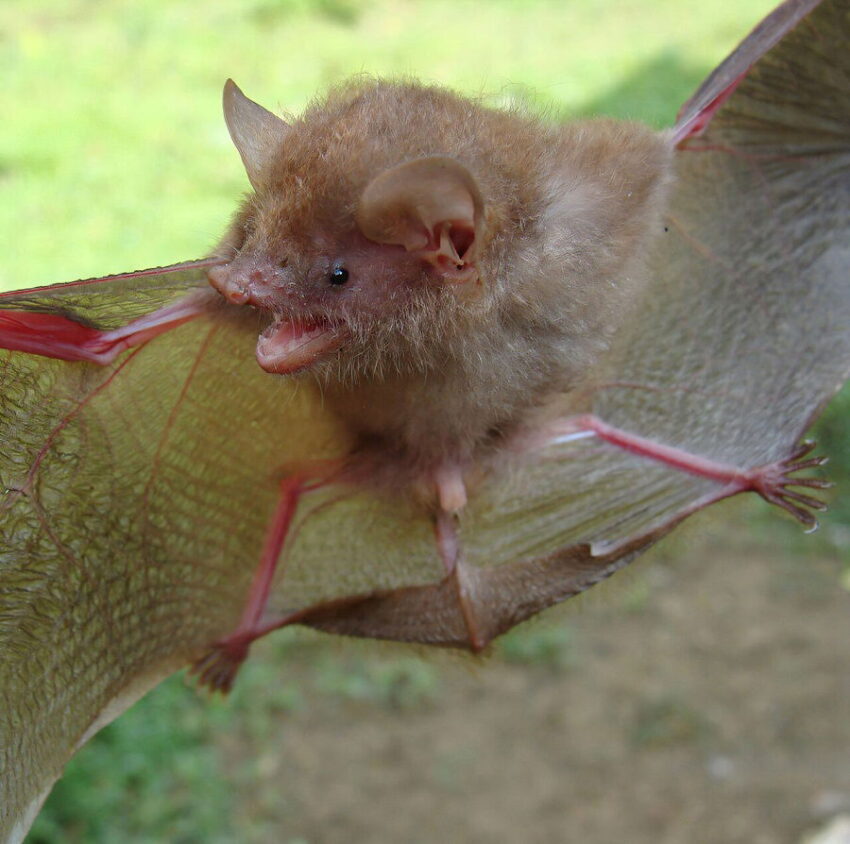Just in time for Halloween, scientists have discovered six new species of bats in the forests of the Philippines. This remarkable discovery highlights how much of the world’s biodiversity is still waiting to be uncovered and adds to the already rich variety of bat species across the islands.
The new species were identified by researchers from the Royal Ontario Museum (ROM) in Canada, the Field Museum in Chicago, and Lawrence University in Wisconsin. These bats belong to a group known as tube-nosed bats (Murina), named for their distinctive tubular nostrils. The findings were recently published in the journal *Zootaxa*.
“This research reminds us how little we truly know about the incredible diversity of life around us,” says Dr. Judith Eger, Curator Emeritus of Mammals at ROM. “Every new discovery helps us understand how ecosystems work and how we can protect them for the future.”
Before this study, only two tube-nosed bat species were known from the Philippines. But after years of collecting and examining specimens, the research team found something astonishing.
“We confirmed one of the known species,” explains Dr. Burton Lim, Assistant Curator of Mammals at ROM. “Then we discovered another closely related species that was completely new to science. And on top of that, we identified five additional new species that had been mistaken for an already-known one. So what we thought was one species turned out to be six!”
The new bats—*Murina alvarezi*, *Murina baletei*, *Murina hilonghilong*, *Murina luzonensis*, *Murina mindorensis*, and *Murina philippinensis*—were formally described following detailed physical and genetic analysis. Scientists studied their skulls, teeth, fur, and DNA to confirm they were indeed distinct species. The ROM’s Laboratory of Molecular Systematics conducted the genetic testing that verified the findings.
Tube-nosed bats are insect-eating mammals found across Asia, playing an important role in keeping insect populations under control. Because they depend on forests for shelter and hunting, they are vulnerable to habitat loss caused by deforestation.
The Philippines, made up of more than 7,000 islands, is one of the world’s biodiversity hotspots. Before this discovery, at least 79 bat species were known; now that number has increased to 85.
“This discovery shows just how special the Philippines is,” says Dr. Lawrence Heaney, Curator Emeritus of Mammals at the Field Museum. “On a per-unit-area basis, it has the most distinctive mammal fauna of any country in the world.”
The new species are all small, weighing just 4 to 14 grams each—about as much as a small coin. The specimens were collected over more than three decades of fieldwork through the Philippine Mammal Project, a collaboration between the Field Museum and the Philippines’ Department of Environment and Natural Resources.
Many of the bats were found in protected Key Biodiversity Areas, including remote forest reserves that remain largely untouched by development.
“These bats are extremely elusive,” says Dr. Jodi Sedlock, a co-author and professor at Lawrence University. “The collection we studied was built up one bat at a time, over many years of difficult fieldwork. Seeing all that effort come together to reveal six new species is deeply rewarding.”
Each of the new species carries a name honoring people who made lasting contributions to Philippine science.
*Murina alvarezi* was named in memory of James Alvarez, a young bat biologist from the University of the Philippines-Los Baños who died during fieldwork in 2018. *Murina baletei* honors the late Danilo “Danny” Balete, a renowned biodiversity scientist who worked with the Field Museum for decades.
Beyond their scientific importance, bats hold a deep cultural presence in the Philippines and around the world. In Filipino folklore, creatures called aswang—mythical shape-shifters that can fly—were inspired by bats, especially the large flying foxes that inhabit the islands.
In other cultures, bats are seen as symbols of good fortune and renewal: they represent luck in China, wealth in India, and are worshiped as deities in parts of Central America.
While these discoveries celebrate biodiversity, they also serve as a reminder that much of the natural world remains unexplored.
“Describing these species is just the beginning,” says Sedlock. “We still have so much to learn about how they live, what they eat, and how their unusual tube-shaped noses help them survive.”
For now, the discovery of six new bat species is both a scientific triumph and a testament to the Philippines’ extraordinary natural heritage—a vivid reminder that even after decades of research, the forests of the world still hold countless secrets waiting to take flight.
https://knowridge.com/2025/11/six-new-bat-species-discovered-in-the-forests-of-the-philippines/
